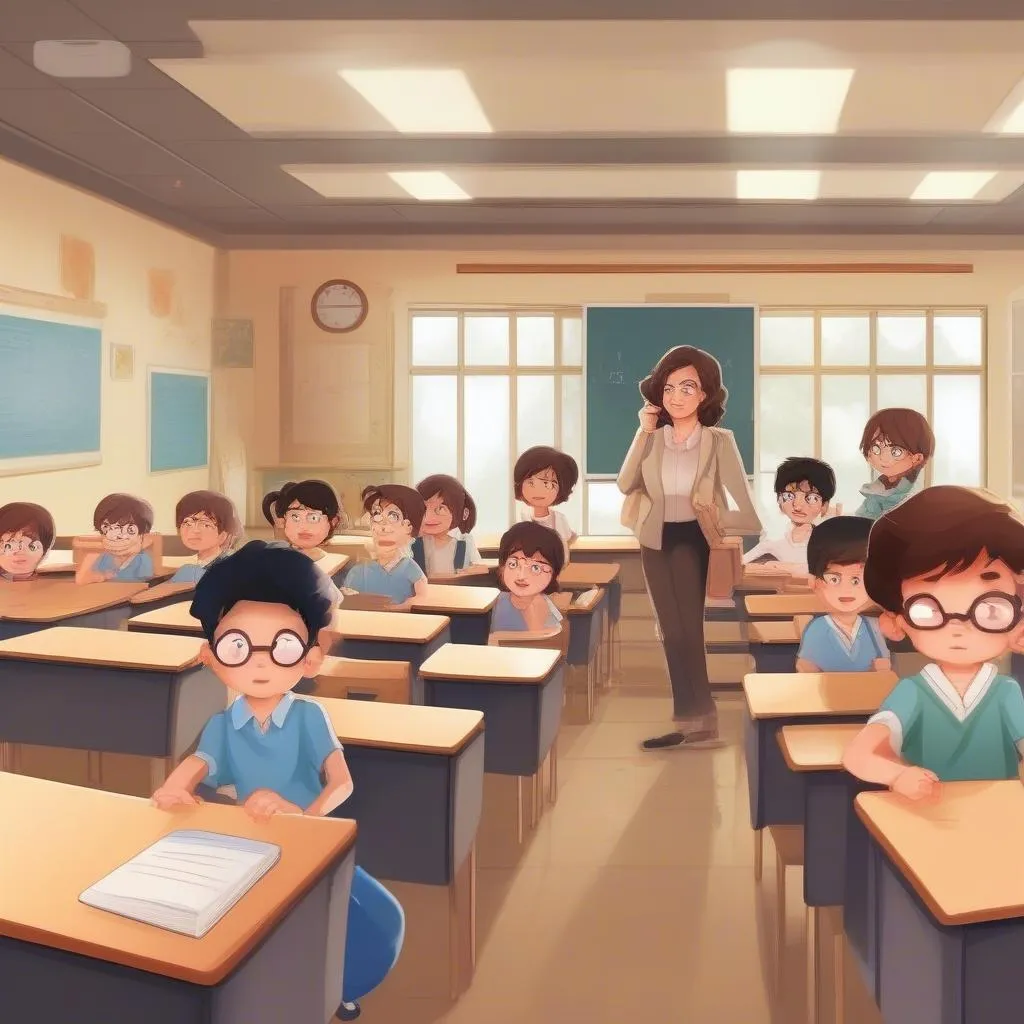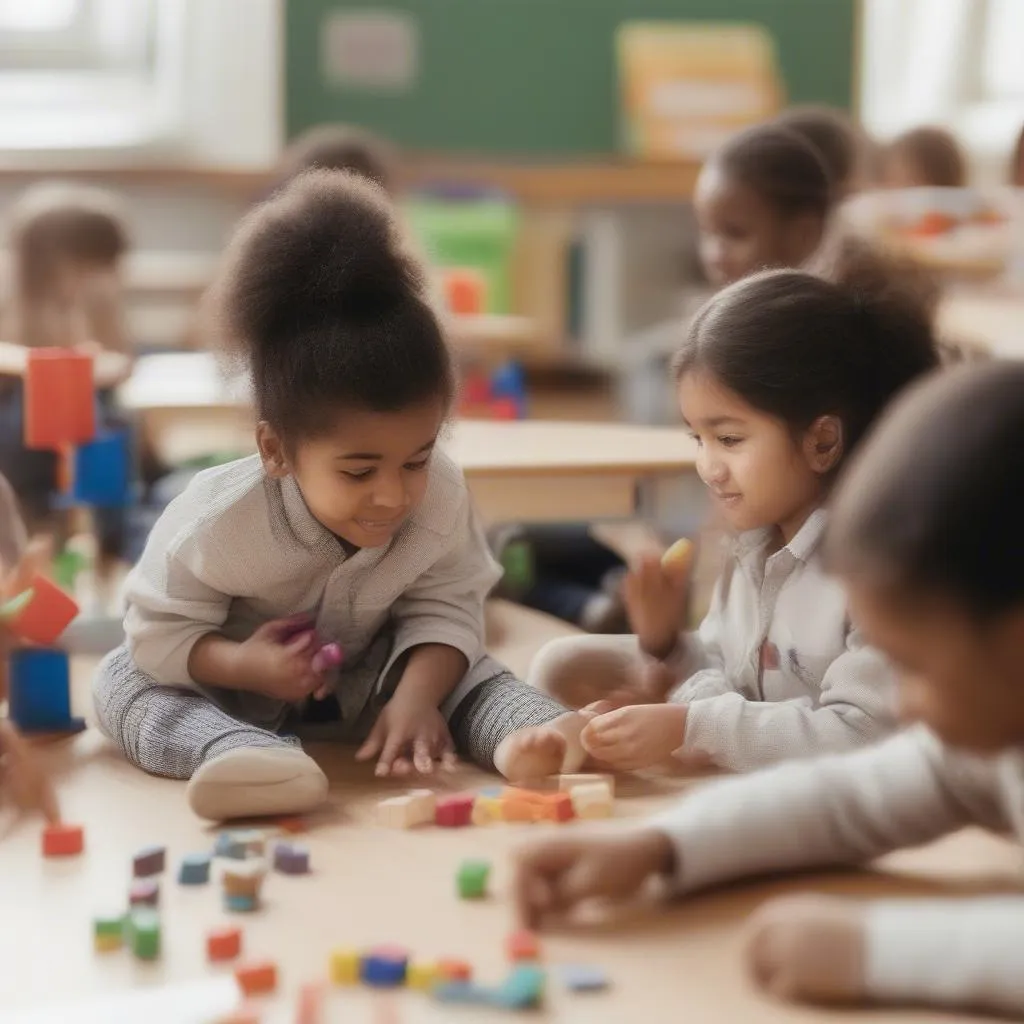“Every part is important!” – This old saying still holds true in all situations, especially in preschool education. Just like the parts of the body, each element in the preschool education environment contributes to the comprehensive development of young children. Among these, the preschool teacher-to-student ratio is a crucial factor, directly determining the quality of education and the safety of the children.
Why is the Preschool Teacher-to-Student Ratio Important?
Many people often wonder: “What is the preschool teacher-to-student ratio? Why is this ratio so important?”
To answer these questions, let’s explore the meaning of the preschool teacher-to-student ratio.
The preschool teacher-to-student ratio is the number that expresses the relationship between the number of teachers and the number of students in a classroom. This ratio is usually calculated using the formula:
Number of Teachers / Number of Students
For example: A class with 20 students and 1 teacher has a teacher-to-student ratio of 1/20.
This ratio plays an extremely important role because:
- Ensuring children’s safety: With an appropriate teacher-to-student ratio, teachers can observe, monitor, and promptly handle dangerous situations that occur with children.
- Improving the quality of education: When the teacher-to-student ratio is appropriate, teachers can spend more time with each child, helping them absorb knowledge more effectively.
- Helping children develop comprehensively: With the close attention and guidance of teachers, children will have the opportunity to develop comprehensively in terms of physical, intellectual, and emotional well-being.
Standards for Preschool Teacher-to-Student Ratio
“It’s not easy to distinguish gold from brass!” – Determining the appropriate preschool teacher-to-student ratio is not easy, as it depends on many factors, including:
- Age of children: Younger children usually need more attention and care.
- Number of children: The larger the class size, the higher the teacher ratio needs to be.
- Type of class: Special classes, such as classes for children with disabilities, often require a higher teacher ratio.
- Curriculum: Classes with special curricula, such as English classes, often require a higher teacher ratio.
According to the regulations of the Ministry of Education and Training:
- 5-year-old kindergarten class: Teacher-to-student ratio is 1/20
- 4-year-old kindergarten class: Teacher-to-student ratio is 1/15
- 3-year-old kindergarten class: Teacher-to-student ratio is 1/10
Note: These are just general standards. Depending on the specific case, the teacher ratio may be adjusted accordingly.
How to Calculate Preschool Teacher-to-Student Ratio: Step-by-Step
“Teaching character is more important than teaching knowledge!” – To ensure the quality of preschool education, calculating the teacher-to-student ratio is essential.
Here are the basic steps to calculate the preschool teacher-to-student ratio:
- Determine the number of students: Count the number of children in the classroom.
- Determine the number of teachers: Count the number of teachers in the classroom.
- Divide the number of teachers by the number of students: The result is the teacher-to-student ratio.
Example: A class has 25 students and 2 teachers. The teacher-to-student ratio is:
2 / 25 = 0.08
This ratio indicates that each teacher has to take care of 12.5 students, which shows that this ratio is not appropriate.
The Importance of Preschool Teacher-to-Student Ratio: Expert Insights
“Only when you have enough food can you pursue morality!” – Practical experience from preschool education experts shows that the teacher-to-student ratio directly affects children’s development.
Mr. Nguyen Van A, a preschool education expert with over 15 years of experience, shares:
“I have witnessed many cases of children being neglected and abused in preschool environments. The main reason is that the teacher-to-student ratio is too low. When teachers have to take care of too many students, they cannot closely monitor and care for each child. This leads to children being easily vulnerable, neglected, and even abused.”
Guidance on Calculating Preschool Teacher-to-Student Ratio: Ms. Thu’s Story
“Necessity is the mother of invention!” – Ms. Thu, a preschool teacher with many years of experience, has found a way to ensure an appropriate teacher-to-student ratio even when the school faces staffing difficulties.
Ms. Thu often divides the class into small groups, each group supervised by a teacher. This helps her easily monitor each child, ensuring safety and effectiveness in teaching.
“One tree does not make a mountain, three trees together make a high mountain!” – Ms. Thu shares:
“This approach helps me closely monitor each child, helping them develop comprehensively. At the same time, it also creates opportunities for teachers to exchange experiences and work together to improve teaching quality.”
Frequently Asked Questions about Preschool Teacher-to-Student Ratio
“Learning from peers is as valuable as learning from teachers!” – In addition to basic information, you may want to learn more about the preschool teacher-to-student ratio.
Here are some frequently asked questions:
- How to determine the appropriate teacher ratio for each class?
- How does the teacher-to-student ratio affect children’s development?
- How to enhance educational effectiveness when the teacher-to-student ratio is low?
- What standards should be considered when calculating the teacher-to-student ratio?
- How to raise community awareness about the importance of the teacher-to-student ratio?
Conclusion
“Where there’s a will, there’s a way!” – Let’s join hands to create a safe and effective preschool education environment for future generations.
Note: The information in this article is for reference only and should not be used to evaluate or compare the educational quality of any preschool educational institution.
You can contact us for further advice on the preschool teacher-to-student ratio.
Phone Number: 0372999999
Address: 234 Hao Nam, Hanoi
We have a 24/7 customer care team.
 Image illustrating the concept of teacher-to-student ratio in a preschool classroom
Image illustrating the concept of teacher-to-student ratio in a preschool classroom
 A preschool teacher attentively caring for young children in a classroom setting
A preschool teacher attentively caring for young children in a classroom setting
 A brightly decorated preschool classroom filled with learning materials and toys
A brightly decorated preschool classroom filled with learning materials and toys